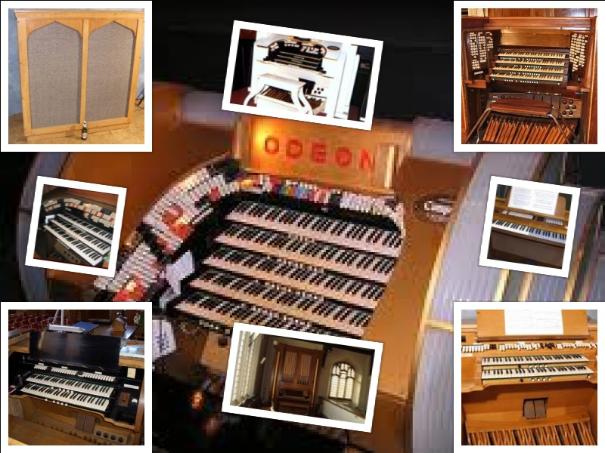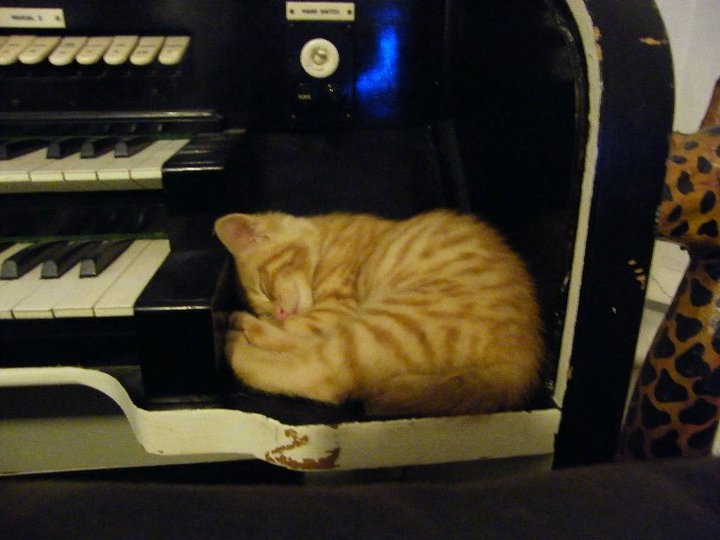A BRIEF HISTORY OF THE JOHN COMPTON ORGAN COMPANY LTD
John Compton was educated at King Edwards School, Birmingham and then studied as an apprentice with Halmshaw & Sons in Birmingham. In 1898 he joined Brindley and Foster in Sheffield before joining with Charles Lloyd in Nottingham.
He first set up a business in 1902 in Nottingham with James Frederick Musson, as Musson & Compton; the partership dissolved in 1904. In 1919, the business moved to workshops at Turnham Green Terrace, Chiswick, London, which had been vacated by August Gern before moving to what was to become a name synomynous with organ building - 'Chase Estate' in North Action in the West of London. What set Compton's apart from other organ builders was that the emphasis was given to building organs using the 'extension' principal with electric action and all pipework totally enclosed. This gave the advantage of less space been required, less pipework and hence less cost to the customer!
During the 1920s and 1930s the company became famous for their cinema organs and in total over 250 instruments were produced - even more than Wurlitzer and Christie! The cinema organs, like the church organs, made use of the latest Compton patents including double-touch cancelling on the stopkeys, polyphonic basses and of course, the extension principal as well as total enclosure of the pipes. Several instruments were also produced for civic halls - often installed in very tight spaces which other organ builders would not even attempt!
Compton worked primarily on electric action pipe organs for churches and cinemas and later electronic organs. Compton's first electronic instrument was the Melotone in 1935 (a solo voice added to theatre organs). Next came the Theatrone in 1938 with the church model being called the 'Electrone'. These instruments evolved out of research by Leslie Bourn, an association begun in the 1920s.
On 13 June 1940 Compton was arrested on the island of Capri, where he had been on holiday. He was interned as an enemy alien but spent much of his time restoring pipe organs.
John Compton died in 1957. The company carried on but with changing times demand for pipe organs decreased and so in 1964 this side of the company was sold off to Rushworth and Dreaper Ltd. Comptons now focused solely on producing electrone organs.
The late 1960s saw difficult times and in 1967 the company was acquired by 'Hirel Electronic Developments Ltd' and renamed 'Compton Organs Ltd'. Electrones produced ater 1968 carry the label 'John Compton Organ Company Ltd' or 'Compton Organs Ltd'. Sadly, the new company was not a success and was liquidated in 1971 marking an end to almost 70 years of organ building.
The remnants of the Compton company were acquired by a Mr J R M Pilling of Rochdale, Lancashire and the business became known as 'J. J. Makin Organs Ltd' before eventually becoming simply 'Makin Organs Ltd'. The original Compton electrone sound techniques continued to be used, albeit with improvements and modifications, and many large instruments were built which included Christchurch Priory and Central Church, Torquay. A small company by the name of 'Compton-Edwards' was also formed and unlike Makin, focused on building small standard instruments - very similar to the CH2, 357 and 363 models. However, this company was not a huge success and had gone by the late 1970s.
In 1997, Makin were taken over by the dutch firm Johannus but continued to operate individually. However, all Makin organs are now produced in Holland.
I have been in regular contact with an ex employee of Compton, and as such was able to give me some wonderful insights into the last 6 years of the company and also of the transition from Compton to Makin.
There has never been another organ company like Compton and there never will be again. Pipe and electronic combination instruments, solo cellos, melotones, theatrones, polyphonic basses, luminous stop control, double touch cancelling and installations from the Odeon Cinema, Leicester Square, London to Yardley Crematorium in Birmingham, Cathedrals to holiday camps, 40 rank pipe instruments to single manual electronics..........Compton did them all!!!



Compton really did think of EVERYTHING...........my cat Milo on my Compton organ when he was just 8 weeks old!
Here's a look inside a Compton electrone organ model 357 - this particular organ is installed at Marton United Reformed Church, Blackpool:
A demonstration of the patent 'solo cello' by Joe Marsh on the Compton organ at Oxnead Mill which was originally installed at the Carlton cinema in Norwich: